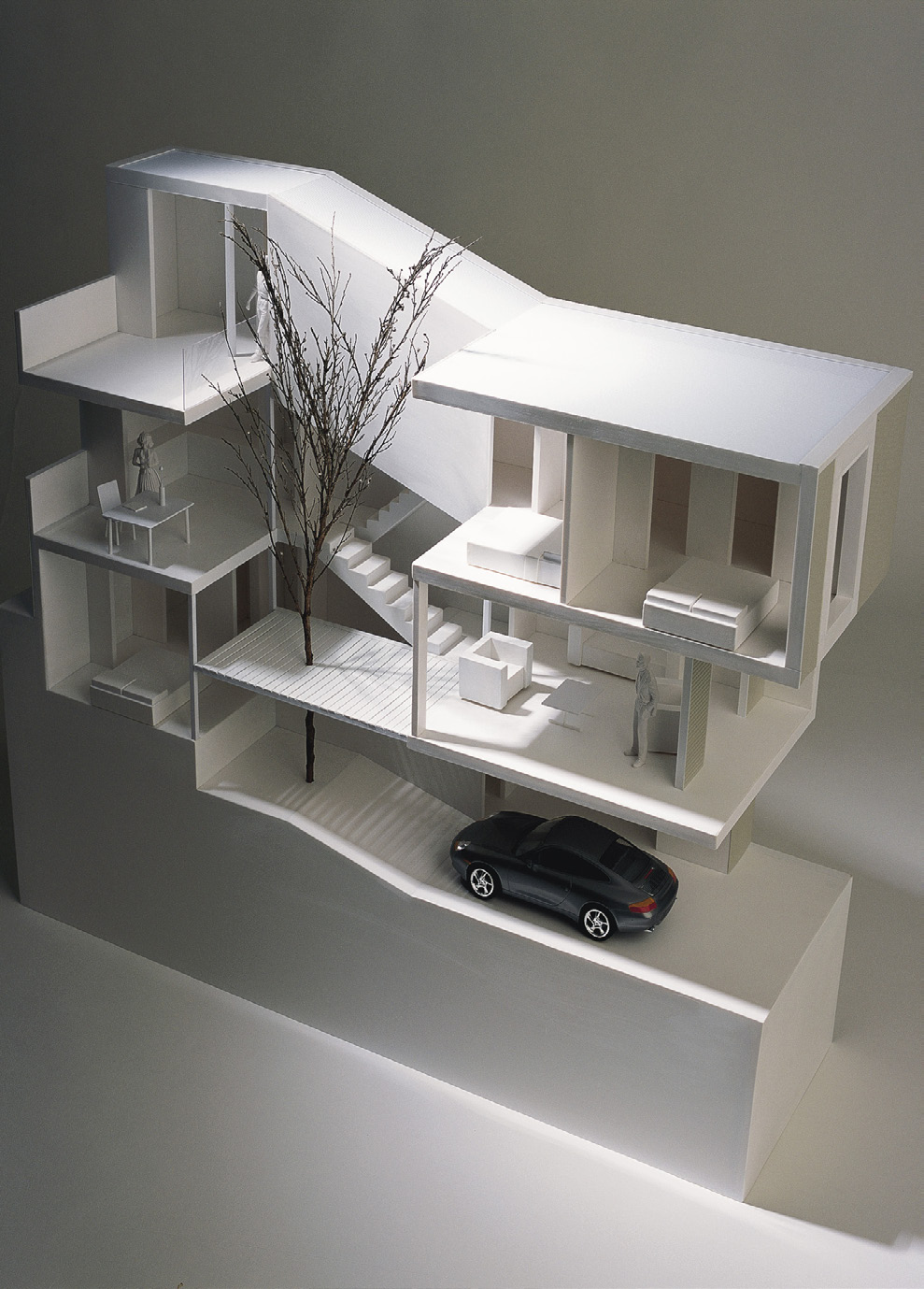This development is a benchmark project in Auckland. It seeks to introduce medium density housing as a means to attract people back to the city.
Download PDF:
51 houses form the second phase of a 250 unit residential development on the edge of the Central Business District in Auckland. This development is a benchmark project in Auckland. It seeks to introduce medium density housing as a means to attract people back to the city.
The challenge was to create qualities normally associated with suburban living in such a development and on a very restricted topographical location. The site is of historic importance, once forming the pohutakawa clad water edge. At the beginning of the 20th century the harbour was reclaimed and cut back to form a Gas Works. The slope negotiates the change in topography as it descends to the street at the front of the site.
The project is bound together by a new public space; a boardwalk that moves from the park climbing up the cliff top, making the cliff landscape accessible as part of the street network below. Four houses were conceived (Cliffhanger, Leapfrog, ZigZag and Saddlebag) that are shaped by the different and often contradictory forces present on the site. Motorway noise, minimal footprint, large houses, parking, active street frontage, stunning views across the harbour, sun, privacy and outdoor space.
The houses are conceived as a series of simple volumes consistent in materiality but differentiated through subtle colour shifts and typology. Familiar materials such as galvanised corrugated steel and timber are used in a slightly unfamiliar way. The composition of units is a reinterpretation and playful exploration between of the traditional notions of villa and terrace typologies.



















